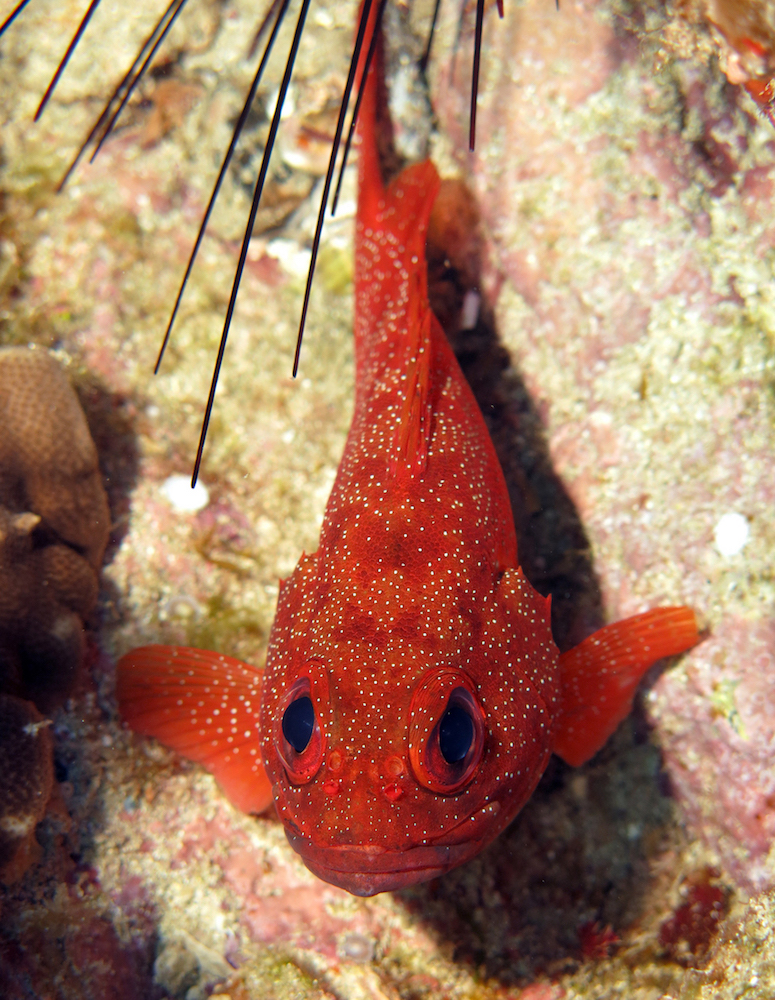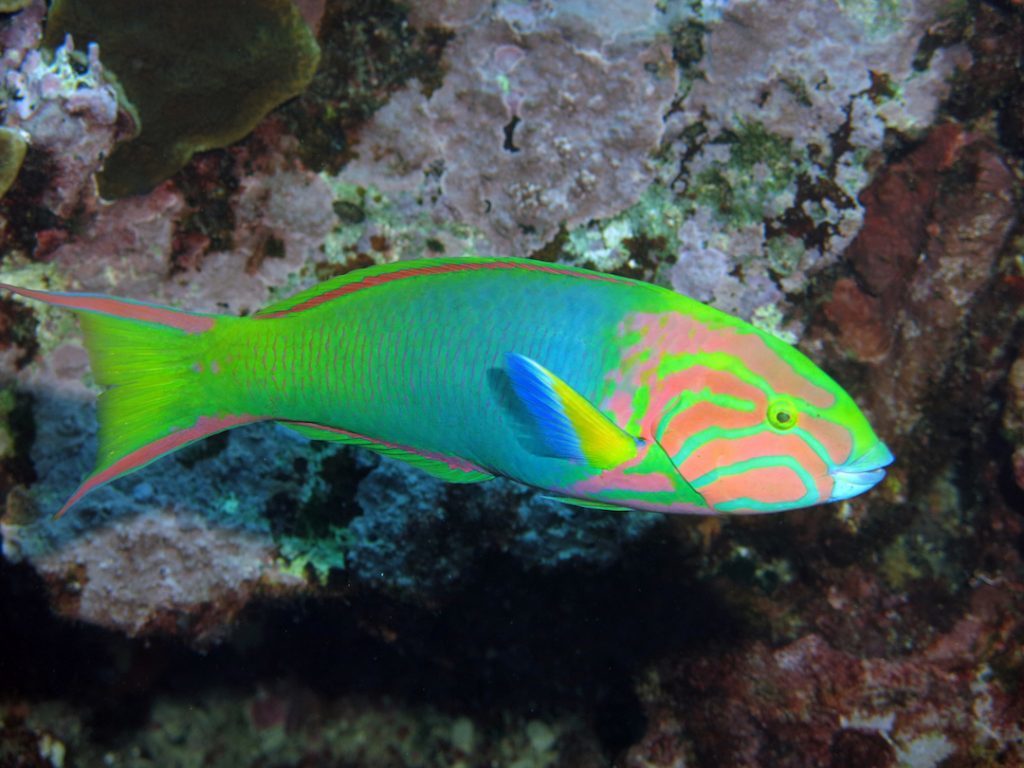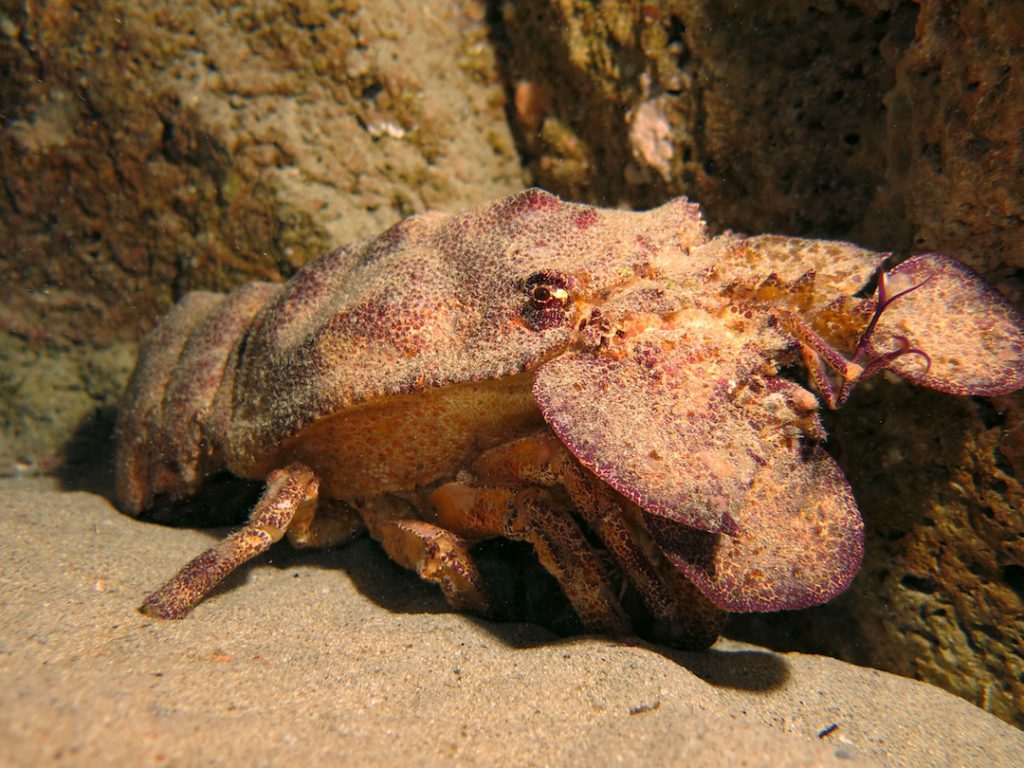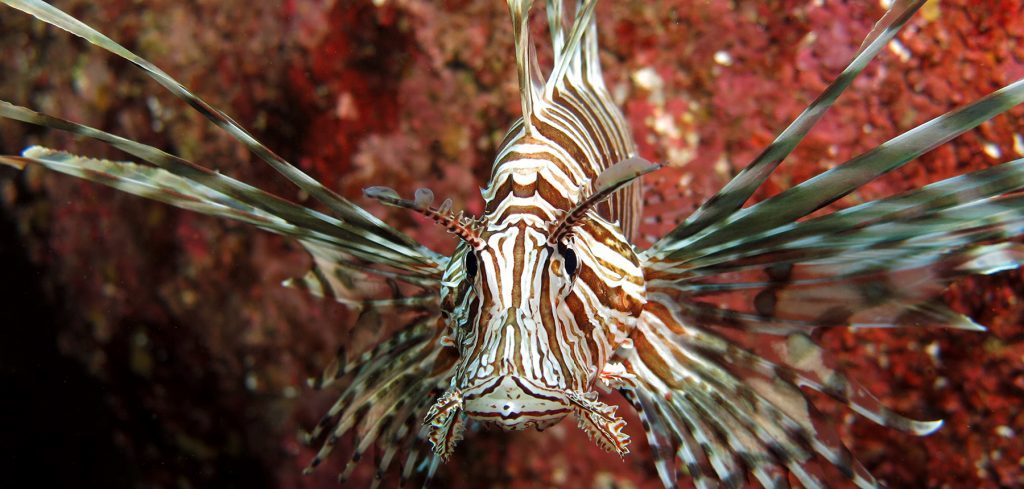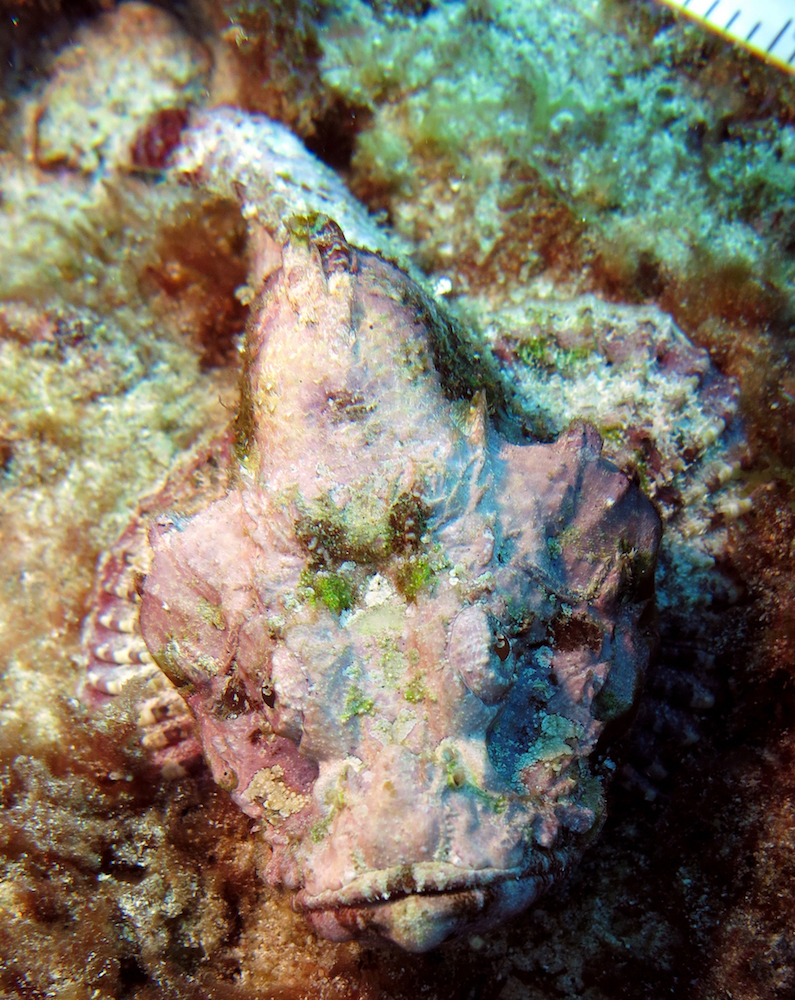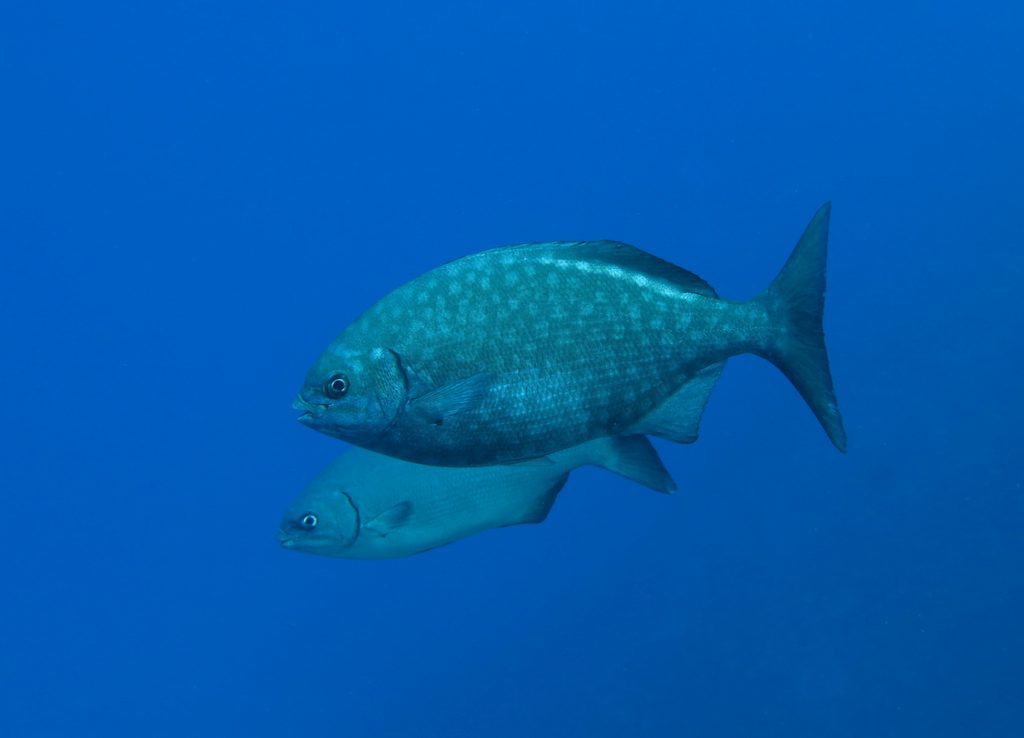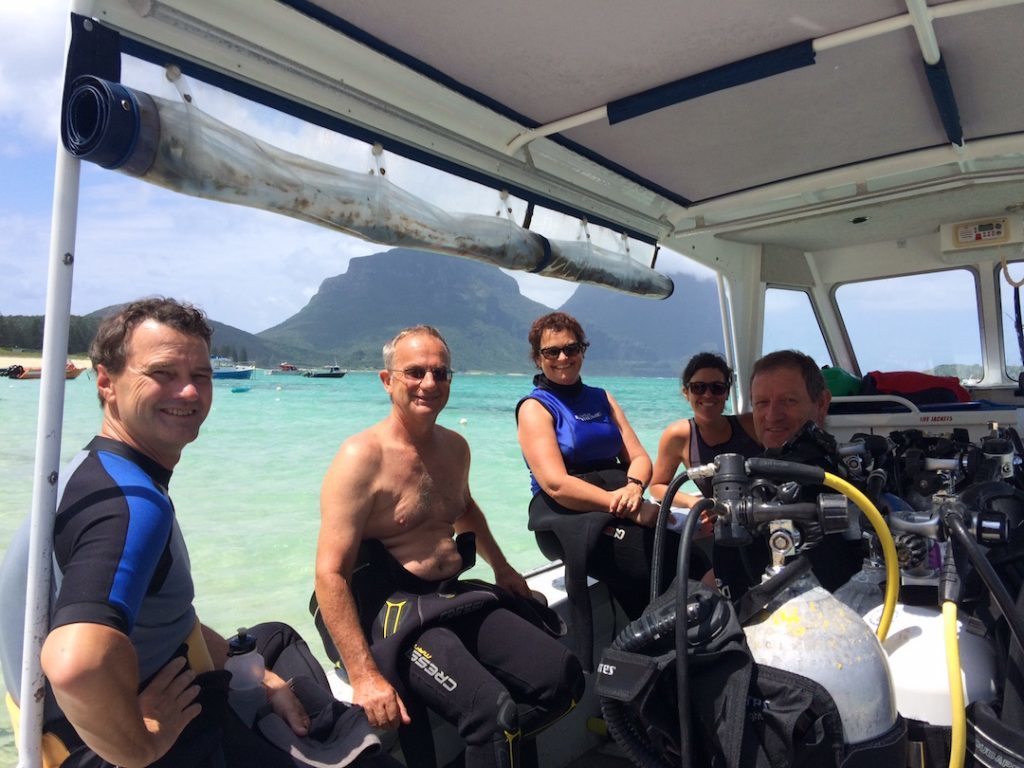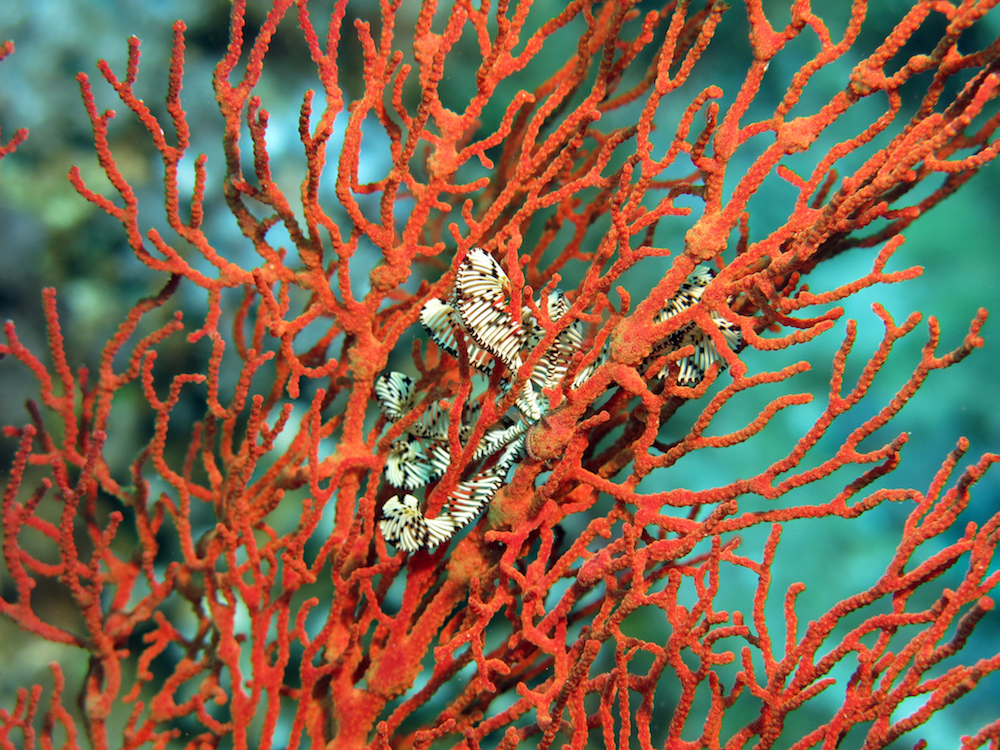“Yeah sure”, came the reply.
Andrew and I had some trouble convincing the others, on returning to the boat, that we had seen the biggest nudibranch ever on Malabar Reef. It was climbing up over a ledge on our transect and I was so surprised by its size that I checked it alongside my glove. We settled for 45 cm plus, in the end, but I do note that my Reef Creature book lists them up to 60 cm.
As an RLS destination, Lord Howe Island is one of my favourites, with friendly people, beautiful location and two weeks of total immersion in all things marine. On our recent trip in February 2016, we were fortunate to have good conditions and plenty of surprises: pacific drummer turning their white-spot patterns on and off at will, weird “devil” false stonefish (Scorpaenopsis diablosus), plenty of bluefish (Girella cyanea) and a fair smattering of curious Galapagos sharks (Carcharhinus galapagensis).
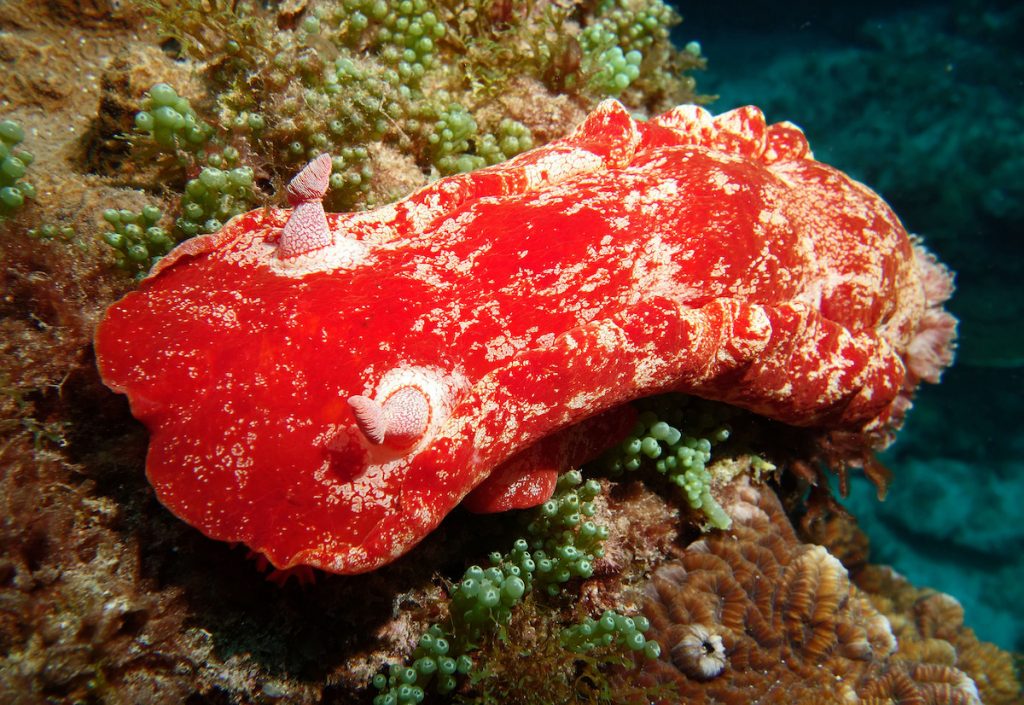
We completed 120 surveys, recording 255 species of fish and 88 species of invertebrates. The team [Toni Cooper, Andrew Green, Sallyann Gudge, Christo Haseldon, Tas Douglass, Jasmin Knight, Caitlyn Woods, Paul Day, John Turnbull, Aaron Ralph, Brian Busteed, Tom and Nicola Davis, and Margo and Ash Smith] put in long days, entering data late into the night. But that’s part of the challenge when you are an RLS volunteer! Big thanks to Margo and Ash (who were supposed to be on their holiday at the time) for putting in such a huge effort to help us make up for being a few crewmembers down.
Alas, it was all over too soon. As I sat in the little airport building, waiting for my flight home to arrive on the all-too-short runway, I looked through my photos. I found the one of the Spanish dancer (Hexabranchus sanguineus). It was definitely two feet long!
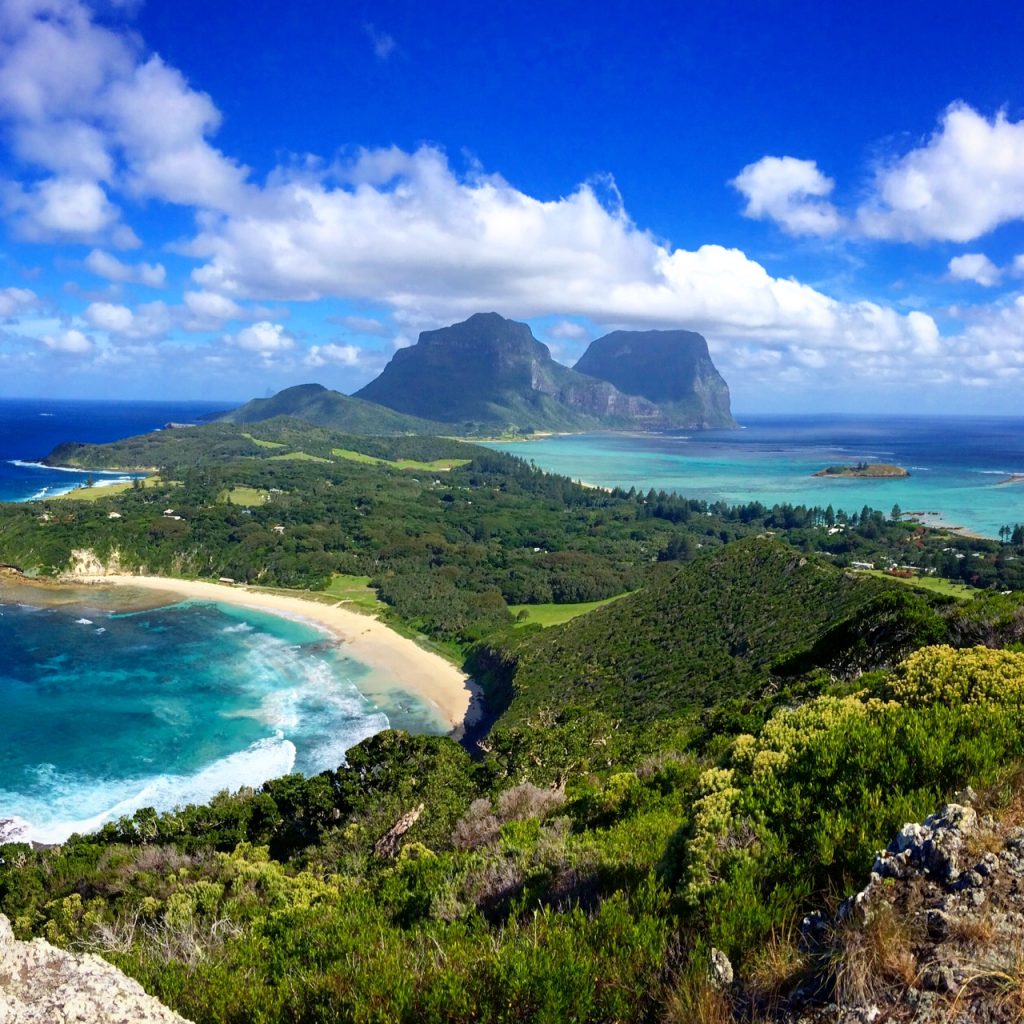
As always, RLS is so very grateful to the LHI Marine Parks Authority for their ongoing support, we simply couldn’t do it without their logistical, on-ground assistance. Similarly, the local dive shops (Howea Divers and Pro Dive) are fantastic at enabling us to get to our targeted sites. The LHI Marine Board generously provided accommodation to RLS volunteers at the Research Station – a facility that is so valuable on such a remote island.
We graciously acknowledge that this year’s bi-annual LHI survey expedition was facilitated through funding from The Ian Potter Foundation.
